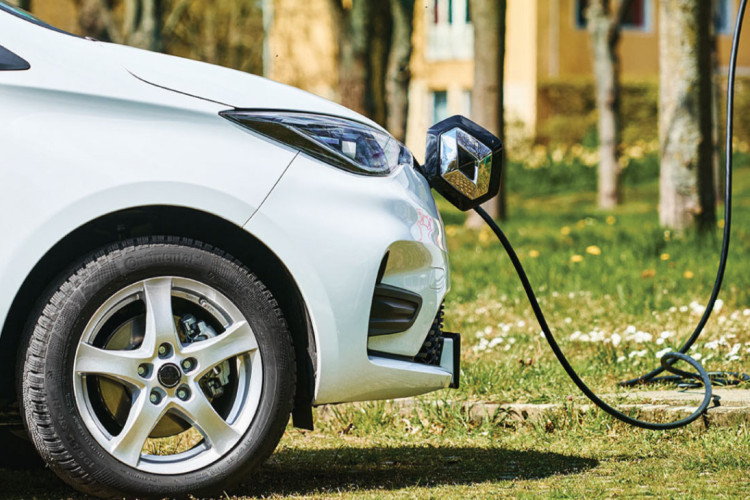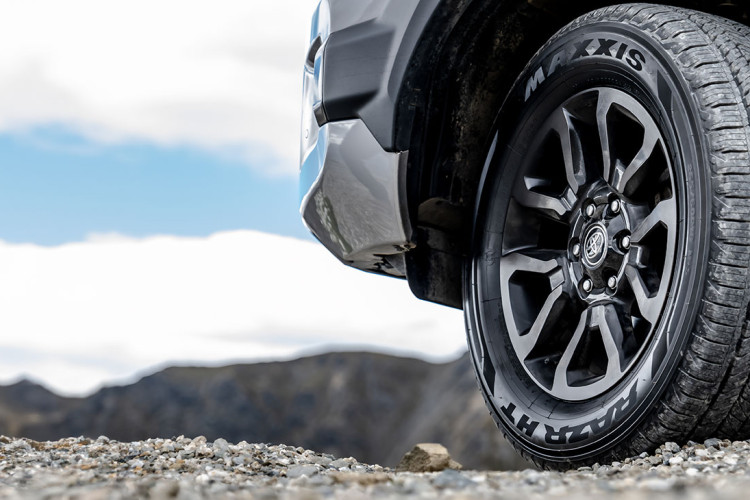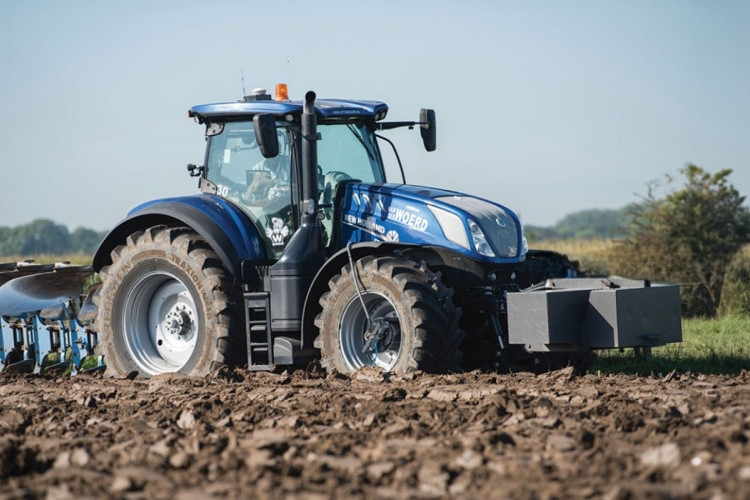What's the difference between Front Wheel, Rear Wheel and 4 Wheel Drive?
For the year to June 2019, utes took 5 of the 6 top-selling vehicle spots. That’s a whole lot of people opting for a 4WD. What’s more, SUVs made up another few spots in the top 10 and those included a good number of all-wheel-drive or 4x4 options. The New Zealand love affair with the 4WD is legendary. We love the Hilux. We love the Ranger a little more in recent years. We love the Tritons. The Colorado. The Navara. The Amarok.
Yes it’s true - the 4WD ute is as Kiwi as your local 4-Square. There’s also something reassuringly rugged about driving around in a ute and knowing you can go off-road if you want to. It’s like being a black belt in Karate. You don’t need to show people you have mad martial arts skills, it’s enough just knowing you have them at your disposal.
Which leads to the controversial question...do we really need them? More than that though...do we really know what the difference is between the options we have?
All this probably means we should take a look at the options and explain the differences. So without further ado...let’s digress and talk about drivetrains.
The Drivetrain is connected to the...
Which part of your car is the drivetrain? Ok, that’s a trick question. The drivetrain isn’t a single part. Rather, it’s a series of parts which work together, transferring the rotational power generated by the engine, to your wheels. So you can move. Simple eh.
When we talk about 4WD, 2WD etc, what we’re really talking about are variations of the drivetrain setup. It’ll either be able to deliver the power to the front, the back or both. But not necessarily evenly or at the same time. Confused yet? Good, we’ll move on.
Unless you’re a mechanic you don’t really need to know how the different drivetrain setups work. Which is our way of saying we don’t want to explain it. What we do need to know is what the setups are and the different advantages of disadvantages they provide. However, if you do really want to know all about Viscous Coupling then here you go.
The different drivetrain setups:
- Front Wheel Drive (FWD)
- Rear Wheel Drive (RWD)
- All Wheel Drive (AWD)
- 4 Wheel Drive (4WD)
Front Wheel Drive (FWD)
As you’d expect, a Front Wheel Drive car is where all of the engine power is transmitted to the two front wheels. This has become the most common setup for a 2 wheel drive vehicle.
The Front Wheel Driving Experience
For the most part, driving a FWD vehicle is just about as easy as driving gets. A FWD vehicle provides good grip and is well suited to slightly adverse conditions, like rain and light snow. With the engine and transmission at the front, over the wheels where the power goes, you get improved traction. There’s also improved feedback through the steering, helping you better gauge what’s going on below you.
With all the major parts located towards the front of the vehicle, you tend to get better interior room and a larger boot space.
What’s more, the setup is comparably inexpensive for manufacturers, making FWD vehicles (generally) more affordable. The saving is continued throughout ownership. A lighter assembly helps with fuel consumption, whilst less parts means less to go wrong and (typically) cheaper repair bills (although sometimes you can find the cramming of everything up front adds to cost by adding the need to remove more parts to get to the bit you want).
If there is an upside, there’s also likely to be a downside. Some front wheel drives will suffer from torque steer. This is when unequal power transmission to one of the front wheels results in pulling to one side. Also, if you push the vehicle around corners then understeer is a real prospect.
Finally, that generally great traction you get...gets lost when you go uphill. This is because the weight of the vehicle is transferred towards the back wheels, away from the ones with the power.
Common Front Wheel Drive Vehicles
This is normally the domain of small to medium sized cars. Hatchbacks and small SUVs often come in FWD. Here is where the some petrol head snobbery probably comes in too. Because FWD vehicles can suffer from torque steer and delivering masses of power in corners adds to understeer...sports cars are normally Rear Wheel Drive (RWD). This is often enough to make car fanatics turn up their nose at FWD vehicles. This list of awesome FWD cars might just persuade them otherwise though.
Tyre Tips for FWD vehicles
It’s all about getting good quality tyres. Your front wheels are doing all the hard work. They do the steering, braking and accelerating. Which means they’ll wear twice as quick as the rear tyres. So rotate them every 10,000kms folks. You’ll get better tyre economy and be safer for longer that way.
Rear Wheel Drive (RWD)
You guessed it, the power goes to the rear wheels. As alluded to in the previous section, car enthusiasts will normally prefer a RWD vehicle. After all, nearly all American muscle cars are Rear Wheel Drive.
The Rear Wheel Drive Experience
Whilst the engine is still in the front (normally), you need additional parts at the rear to facilitate the transfer of power from the front to the rear. This more optimal weight balance between front and rear benefits the handling characteristics of RWD vehicles.
Performance characteristics of RWD vehicles are also enhanced. Think of accelerating off the line. The weight gets transferred towards the rear of the vehicle, increasing traction to the wheels with the power, trying to propel you forward. The separation of power from the job of steering delivers more performance benefits. The issue of torque steer encountered with FWD vehicles is completely removed.
If you’re wanting to do lots of towing, a RWD is better suited than a FWD as the source of power is closer to the load.
If all this has you thinking RWD is for you and suits your fast, hard driving style...then beware. RWD cars come with fishhooks. You need to know how to tame the beast. Whilst handling in the dry is improved, throw some rain or snow on the road and it’ll not cope as easily. Oversteer can be an issue and that’s much harder to master than understeer. Which means it represents a bigger threat to safety.
RWD vehicles are also heavier because of the additional parts. These parts take up space and can reduce interior legroom. What they take away in legroom they add to the purchase price too. You need to pay for those additional parts.
Common Rear Wheel Drive Vehicles
Sports cars, performance cars and luxury cars. Think Ford Mustang, BMW 7 Series, Mercedes Benz S Class and...erm...the Kia Stinger.
Tyre Tips for RWD Vehicles
Front and rear need to be matched. The front do the steering and most of the braking. The rear does the accelerating and some of the braking. Not rocket science then...you need to rotate every 10,000kms. The main thing is this...when buying just two new tyres you need to put them on the rear. It’ll help fight the dreaded oversteer.
All Wheel Drive (AWD)
There’s a feeling you already know what we’re going to say here. Yup - with All Wheel Drive vehicles, power is delivered to both the front and rear. That said, it’s not an even split and it might not be all of the time. If a vehicle is labelled as being Full Time AWD, then it's likely the spit of power is 80% to the front and 20% to the rear. Some AWD vehicles are essentially ‘on demand’ only. That is, it’s only when the AWD system detects slippage in the front that it delivers power to the rear.
The All Wheel Drive Experience
The big thing here is traction. So if you’re likely to encounter greasy and wet roads, or snow, on a relatively frequent basis then AWD might be a good option. Same goes for if you do a decent number of KMs on the gravel roads we have in abundance here in New Zealand. The added traction of an AWD also helps with towing.
If you’re a bit heavy footed off the mark, you’ll find the power distribution makes it harder for you to spin the wheels, saving you a few km’s of rubber wear.
So what’s the trade off? Cost generally. AWD vehicles will normally have reduced fuel economy. They also come with higher purchase price tags as you have to pay for all that technology. Which means servicing that technology.
Finally, they sometimes lead to a false sense of security. The lack of wheel spin when pulling off in the snow is great...but it doesn’t mean you have added traction all the time. Braking distances and cornering are the same as 2WD. Consider this too...a FWD with winter tyres will deliver better snow driving capability than an AWD with All Season tyres.
Common AWD vehicles
Welcome to the world of Subaru for this is the domain of the Outback and Forester.
Tyre Tips for AWD Vehicles
As always, tyre rotation is critical for even wear. When it comes time to replace tyres, with an AWD vehicle you should really replace them as a set. If you don’t, the traction management system can interpret the difference as slippage and get thrown. At the very least, it will often lead to an annoying light on your dashboard lighting up.
Four Wheel Drive
So here we are. The most popular choice for a lot of Kiwis. Power can be delivered to all four wheels at the whim of the driver. What’s more, you get some choices. Normally you can select between 2WD high, 4WD high and 4WD low. You need 2WD high for everyday road driving. 4WD high is good for slippery conditions. For proper off-road action, engage the 4WD Low setting. Now, some fancy new 4WDs will be able to switch at the touch of a button. Some will even do it automatically when slippage is detected. Regardless of how the one you have (or are looking at) works, the 4WD is a beautiful thing.
The Four Wheel Drive Experience
Just knowing you can go most places is half of the fun of owning a 4WD. You’ll find yourself parking by mounting the kerb with your front wheels and dropping down as you straighten up. Just because you can. This is in 2WD too, which generally means your vehicle is operating much like a RWD.
Head to the hills and muddy paddocks and you’ll be wanting to engage 4WD. Then the fun really begins. With the right attitude and driving skill (not to mention the right tyres) you’ll go places you never thought possible. That’s really the nub of it. You get to explore places you otherwise couldn’t. Possibilities start to open up.
As does your wallet. Your typical 4WD is much heavier. So it uses more fuel. It’s a more complicated beast, which means there’s more to keep in working order. You’ll need to pay more for one too. They hold their price so very well in New Zealand, so there’s an upside there too but everything is relative.
Then there’s handling and braking distance. You can’t throw them around the corners like a car and because of the added weight, you’ll need some added distance when braking before you reach a stop.
Common 4WD Vehicles
Ford Ranger, Toyota Hilux, Holden Colorado, Isuzu D-Max etc. And lots of massive old Landcruisers (and massive new Landcruisers for that matter).
Tyre Tips for 4WD vehicles
This is a big one and entirely dependent on what you want the 4WD to do. If you’re not planning on departing the road and will spend your time on the highway, then you need highway terrain tyres. They’ll give you the best handling and braking performance.
If you plan on the occasional bit of moderate off-road action, like getting to that picnic spot by the lake via access across the farmers paddock, then an All Terrain tyre like the Award Winning Maxxis Bravo should see you right.
The logic follows. If you plan on heading off-road a lot and frequently finding yourself in the middle of nowhere, no roads, no people and no problems (sounds nice eh)...then Mud tyres are a no brainer.
Of course, all of the above are based on logic. You might just want a tyre that looks chunky and mean. Either way, it’s always best to speak with your local tyre professional. It’s always good practice, and best for the vehicle, to rotate your tyres at regular intervals to get the best out of them, and, ideally, plan to replace all 4 tyres at the same time.
Now, back to the question posed at the start…
When do you need a Four Wheel Drive?
Well...it’s your choice so you should do what you want. Don’t let anyone else tell you otherwise. The logic you apply to your choice is your logic and that’s just fine. Honestly, buying a vehicle is a bit like organising a wedding. Suddenly everyone has an opinion on what’s best and why. The poor Bride and Groom generally foot the bill, along with all the unwelcome advice from Aunt Esther who suddenly rears her grey haired head to offer advice on the seating chart. You want to buy a 4WD? Go ahead. You want to buy a small Pink convertible with blue velvet seat covers. Go on then. You want to buy an Amarok? Well, you should have a think about it first. We jest (again, sorry Amarok owners) but you get the point. Just buy what you want to buy.
However... should you want a little summative guidance to aid in your decision making...
A Front Wheel Drive is good for..
- Highway driving
- Lower fuel and maintenance costs
- Drivers who don’t encounter much out of the ordinary in road or weather conditions in the way of snow or ice
A Rear Wheel Drive is likely to appeal to…
- Those who want something a little sporty
- Performance drivers
An All Wheel Drive is good for....
- Handling on all types of road conditions
A Four Wheel Drive is good for…
- Folk who want, or need, to go off-road and veer off the beaten track
All of the above do share one common point of critical importance. Regardless of which wheels and how many are powered, you need good tyres. They are the vehicle’s only point of contact with the road and that contact patch is not much bigger than a postcard. You need a tyre that will stop you in an emergency, especially if the road is wet. So go for brands like Continental or Maxxis. Both have won multiple awards in Independent Tests. And remember, a set of quality tyres is better (and cheaper) than any claim on your insurance policy.
Before we go, a final thought on the New Zealand obsession with Four Wheel Drive vehicles. We’re blessed with a country of significant beauty. Most of us live within easy commute of scenic spots where we might not see too many other people. We can ‘get away from it all’ with ease. Add to this, Kiwis are outdoors people. Our summer pursuits are largely based on making the most of the lakes, rivers, beaches, picnic spots and makeshift cricket grounds. Do we need a 4WD to get there? In many cases, no. But a 4WD carries with it the romantic notion of going beyond these places, sitting on the grass in the shade of a tree in the middle of nowhere and breathing in the silence and clarity of a world away from the noise of the rat race. It speaks to our notion of independence and being able to get to go our own way, a way not defined by roads and GPS maps. The 4WD is almost a symbol of our uniqueness and therefore anyone can wear one (or have one)...

-
Topics:
- 4x4 Driving
More tips and articles

Tyres for Electric Vehicles

Product Spotlight:
Maxxis HT780 RAZR HT

